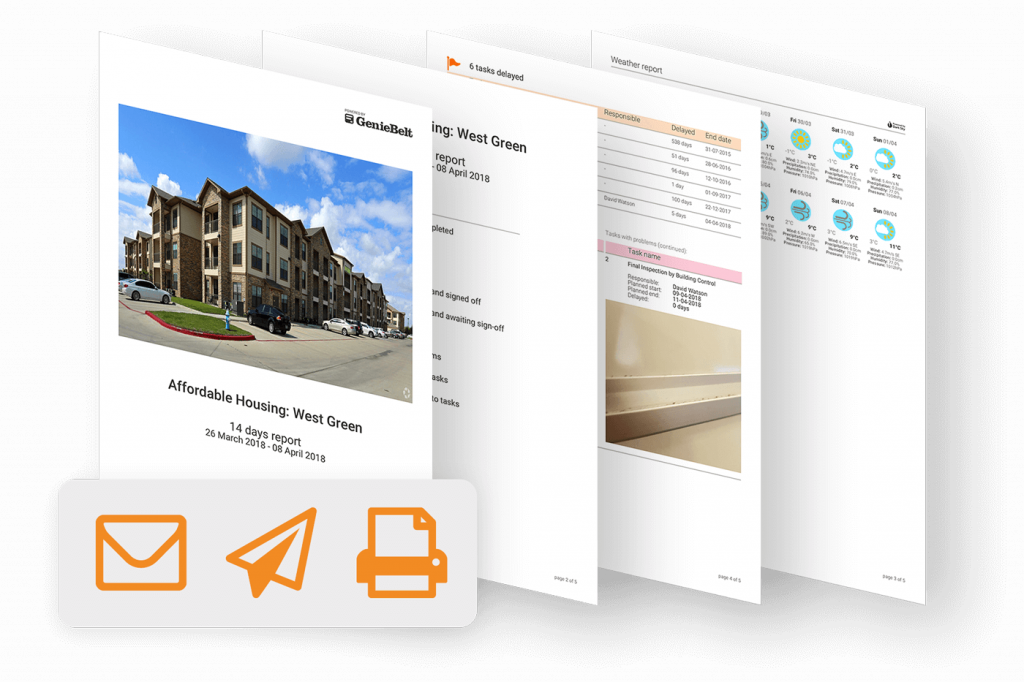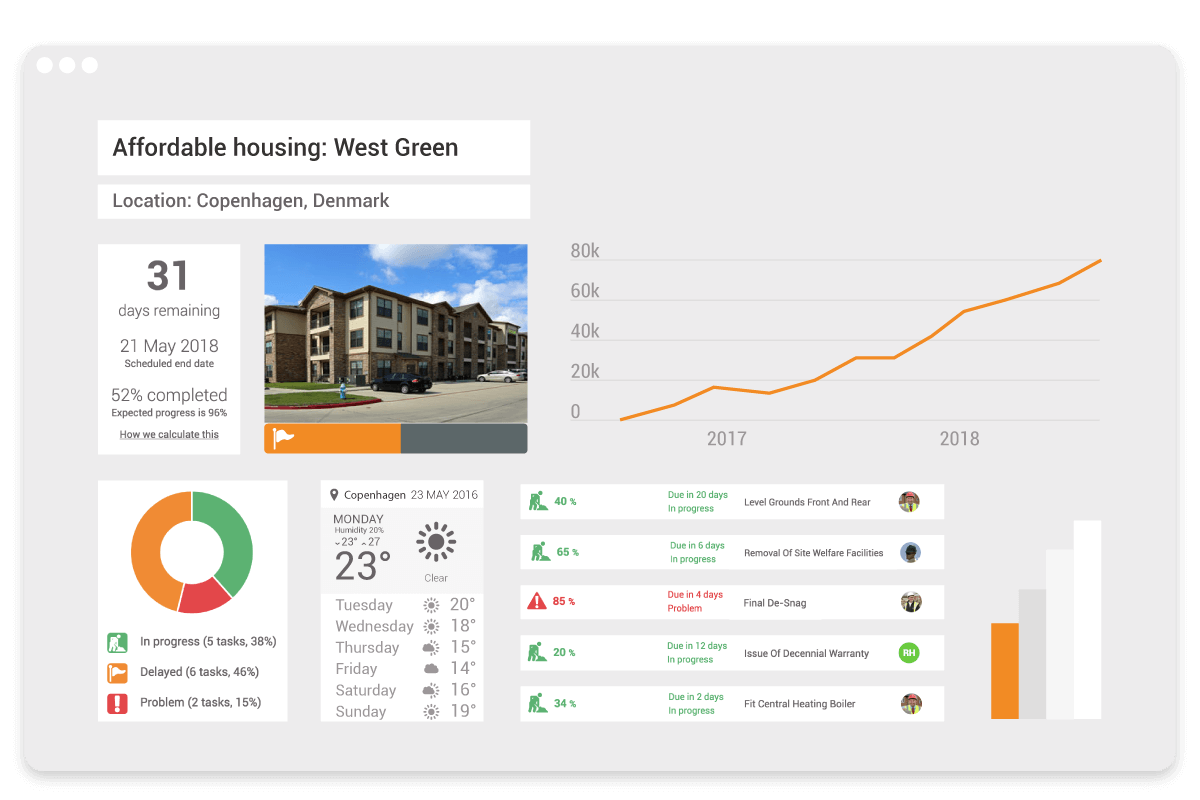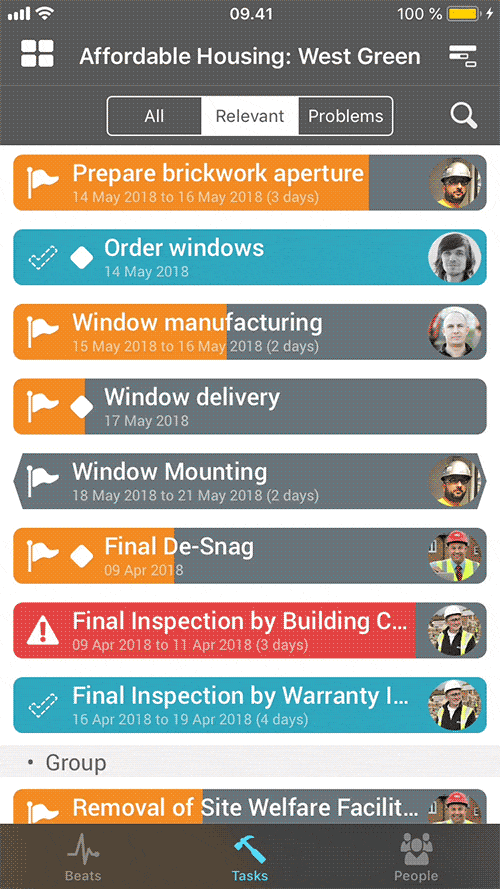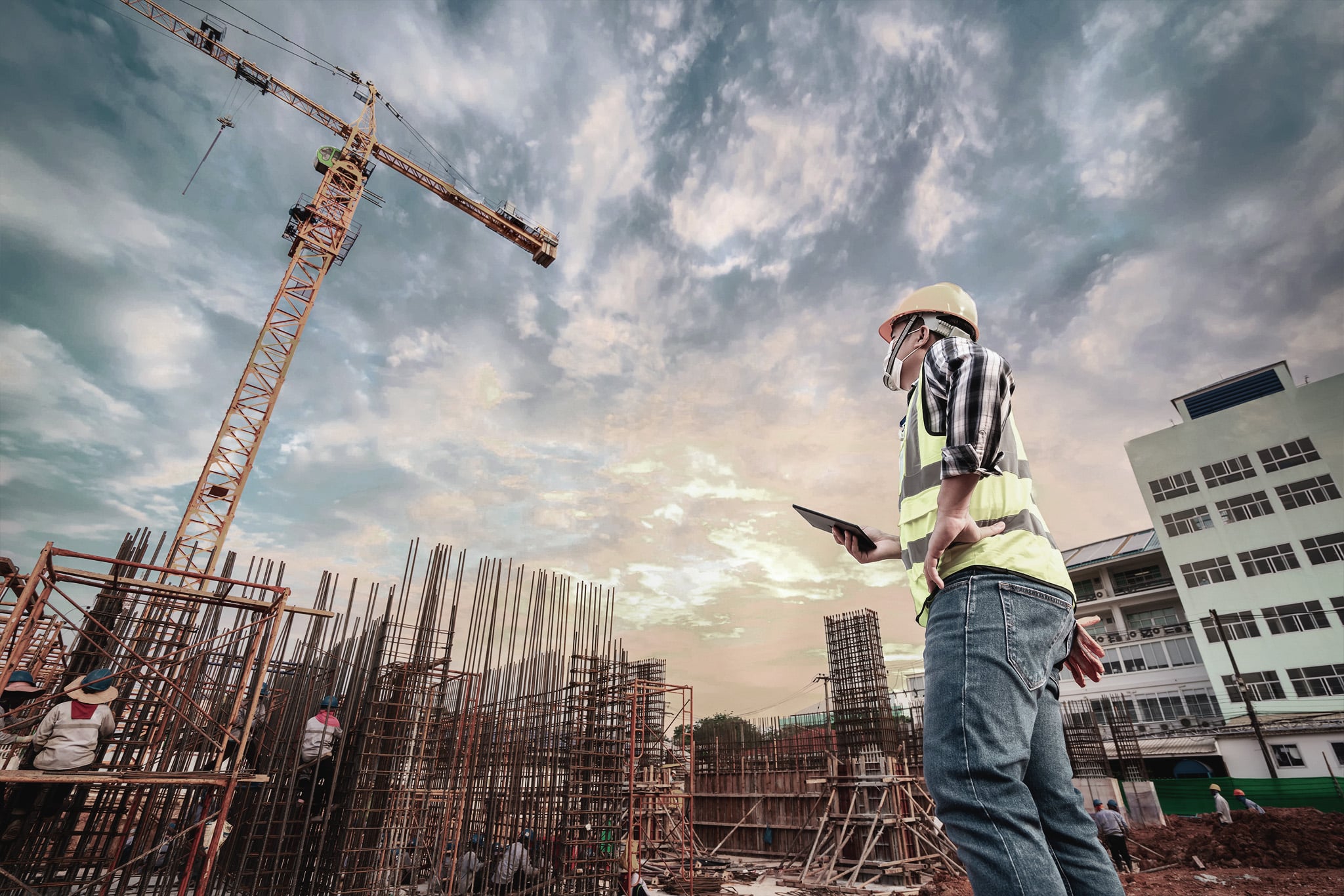Construction projects are known for their perplexity, as they involve a vast number of tasks and stakeholders. The various project parties come together with the ultimate goal of delivering results both on time and on budget.
It goes without saying that the more agents involved the tougher it gets for everybody to stay on the same page. Depending on their specialization and assigned tasks, project stakeholders have different time frames and responsibilities.
In most cases, the initiation of their task is inextricably connected to the completion of another task. In other words, we are talking about a chain of tasks and obligations the disruption of which can lead to costly delays and project overruns.
Nevertheless, this doesn’t mean that contractors aren’t able to deliver construction projects on time and on budget. With the right plan and digital tools, construction managers can feel confident that their project will be done within the agreed time frame.
Time equals money
Regardless of your role in a construction project, time is one of the most valuable assets at your disposal. The better you are at managing it the higher your chances of success. Having an explicit time frame helps a lot in that direction as it allows you to adjust your schedule accordingly.
As reported by McKinsey & Company, delays are still a big nightmare for the construction industry. Large building projects last normally 20 percent more than expected, while budget overruns appear in 80 percent of the cases.
On top of that, the sector appears to struggle a lot with project rework (7-15 percent) and efficiency rates (30 percent). If we take also into account the fact that construction is an industry with a total value of $10 trillion, it is evident that delivering construction projects on time and budget is of tremendous importance.
Tips for delivering construction projects on time and on budget
Delays and extra costs are around the corner when we refer to construction projects. That’s why you should always be prepared to prevent or at least act against them. Below you can find ten powerful tips for delivering construction projects on time and budget:
1. Set a precise timeline in the contract
First things first, a detailed contract which describes exhaustively the project expectations and the time frame is required. Contracts in construction contain a behemoth amount of information and can function as the initial base on which the entire project will be built.
A solid contract can make your life much easier in cases where serious delays or budget overruns arise. Everyone has a good understanding of their duties and know exactly the type of project bottlenecks they can be held accountable for.
In that manner, everybody is fully aware of their duties and the tasks coming their way. As a result, they have a good amount of time in order to get ready for them.
2. Connect the site to the office
A common challenge that contractors face is the connection of the construction site with the back office. Ensuring an undisrupted flow of updates, information and reports between the office and the team are substantial for the entire building process.
Such a relationship can play an essential part in minimizing the margin for error. However, it’s a demanding process that requires perfect synchronization and open collaboration between the various parties.
By open collaboration, we refer to a knowledge and updates sharing process where all project stakeholders can participate and offer their input. The good news is that this goal can be achieved easier today with the advent and remarkable development of digital solutions.
3. Choose the right digital tool
Which brings us to our next tip. Choosing the right tool(s) can make a big difference in terms of delivering your construction project on time and on budget. Either you are working as a site manager, a superintendent or a construction worker, you should always be able to share your updates with the rest members of the team in real-time and without any hassle.
In an effort to visualize how a construction software can help you with connecting your team on and off-site, here are some of the main services that LetsBuild provides:
- Live, real-time construction management.
- Detailed insights across projects and other digital tools in use.
- Progress, audit trail, site diary, and weather reports.
- Dynamic construction schedule.
- Custom dashboards.
- Full audit trail.
- Tracking of every action on-site (from change orders to material delivery).
- Field reporting app.

Digital tools can serve your project in multiple ways and revolutionize the way you collaborate and build in the sector. Making it simple for everyone on the field to report problems and pose questions in a quick and straightforward manner can truly make a difference for the progress of the entire building process.
![]()
4. Rely on data
This is where the true power of digital tools is hidden. Data is already regarded as the most valuable resource for the future of the industry. McKinsey & Company considers big data as the basis for productivity growth, innovation, and global competition.
Problem is that construction is at the moment the least digitized sector following agriculture, with a productivity gap of approximately $1.6tn compared to the average economy.
It is clear, then, that a paradigm shift for the whole sector is required before it’s too late. If construction learns to collect, analyze and control data properly, industry stakeholders can add remarkable precision to the building process and minimize delays or project overruns.
Read also: Is Big Data the most trending thing in construction?
In that sense, Big Data can lay the foundation for effective and on-spot decision-making. What is more, we should not forget that data is the most crucial component of BIM technology. BIM can function as a shared source of knowledge for construction projects and it can provide contractors with valuable feedback in regard to clash detection and the entire life-cycle of the built structure.
By now, it is evident that data is the glue that keeps the project together and allows it to thrive. That being said, you need digital solutions that can help you doing so and which can make sure that none of your precious project information is lost. In other words, you need software that can easily integrate with other tools and function as part of a broader digital ecosystem.
LetsBuild is such an example as it can easily integrate to existing software and processes, such as document management, snagging and checklists. Simply put, you can have everything gathered in one platform and combine factors such as quality, cost, time, resources and safety. And most importantly, you can share this information across the different departments, processes or projects.
5. Review your schedule regularly
From start to finish, it is imperative that you monitor closely the progress on site. Despite its size, a detailed overview of your project through actionable reports should be considered a must. Like that, you can gain insight into the whole process and be able to prevent harmful mistakes and delays before they happen.
Especially if you have to handle multiple projects at the same time, you need a software which allows you to detect quickly which projects are progressing as agreed on the plan and which are not. This will help you optimize the allocation of your resources, and focus your attention and efforts where necessary.
For instance, in LetsBuild you can gain access to a top-down overview of all your projects while sustaining a precise level of detail for every individual project. In addition, you can effortlessly create auto-generated progress reports which contain photos and crucial information for different aspects of the building process (eg. daily weather reports).
 6. Field reporting is your friend
6. Field reporting is your friend
We referred before to the importance of linking the construction site to the office. Now it’s the perfect time to focus a little more on the field reporting procedure. Ideally, every member of your project from the supervisor and the site manager to the last construction worker should be able to use their smartphone in order to report in real-time the progress of their tasks.
This can accelerate the entire project to a remarkable extent and give room for faster decisions and a more actionable approach to the way the team designs, operates and reacts to feedback.
Like that, you can put an end to meaningless meetings and never-ending phone calls. With the right process and digital solutions in place, many of these briefings can be avoided and more time and energy can be dedicated to more crucial aspects of the project.
Below you can find an interesting example of how you can report progress by using the LetsBuild app:
7. Keep updates short and to the point
Collecting as many information from the field as possible is always an excellent idea. Nonetheless, you have to share it with your team in an effective and straightforward manner. Get straight to the point and let them know exactly what you need from them. In that way, you can boost efficiency and help everyone move faster.
Digital tools can be a valuable ally to this effort as they can visualize the different project tasks and gather all data in one place. No more time wasted in searching for your data in different systems.
The use of a custom dashboard can provide you with access to the most critical project information in no time. Like that, you can avoid clutter and save both time and money. More importantly, this ability to filter effectively the available data can make it easier for you and your team to act instantly once a crisis situation emerges.
In the following photo you can get an idea of what a customized LetsBuild dashboard looks like:
8. Invest in training
Once you have your schedule and tools in place, it’s time to focus on the human factor. Proper training is one of the secrets of success for delivering construction projects on time and budget.
The training should cover two very different yet highly connected areas of the project. On the one hand, it’s the training of construction workers on the equipment, tools, and materials that have to use on the field. In other words, the training on the manual construction work. The training should take place before the beginning of the building process and should focus particularly on safety and communication.
A good idea also is to make sure that you choose some experienced workers in your team who can be a good example for the rest of the guys on site.
On the other hand, all project stakeholders should be thoroughly trained in the use of the digital tools that you intend to use both on and off site. Only then, you will be able to take the most out of the digital solution(s) you have selected.
To that direction, it’s highly advisable that you ask your software provider to visit you on site for a few days or weeks in order to train your team on the proper use of the tool.
9. Hire the right people for the job
Show me your team and I will tell you whether your project will be delivered on time and on budget. If you want your training process to be successful, then you have to invest in gathering the best talent available.
Experience is, of course, one of the most decisive factors during the selection process. You need people who have worked on similar projects before. In that manner, you can feel safe that they can react quickly and effectively in crisis situations where both talent and a clear state of mind is required.
Find also: 25 ways labor market loses money on productivity
A short note at this point. It is no secret that with the arrival of data and digital technologies, knowledge workers are seen as the construction workers of the future. That being said, make sure that you attract individuals who have a strong technology background and who consider the construction industry as an opportunity for a long-term career in the tech world. This new type of workforce can give you a remarkable boost in terms of innovation and productivity growth.
10. Have a solid risk management plan in place
Last but certainly not least, you should always have in place a well-elaborated risk management plan. This is your last line of resistance in your endeavor to deliver your construction project on time and on budget.
Try to predict all the possible negative scenarios where things don’t proceed as they are supposed to. Then, come up with functional solutions to these crisis situations. In a sentence, a risk management plan can protect both your project and your team from productivity, safety or any other type of disaster.
As we recently described to our blog post about risk management plan in construction, the main factors of risk in construction could be summed up to the following:
- Expectation to generate a high return on all invested funds.
- Great pressure to save money and time during the building process.
- Safety and security risks.
- Consistent effort for positive margins.
- Project disputes.
Final word
Wrapping it up, it doesn’t take much to understand that delivering construction projects on time and budget is quite a challenge. Nonetheless, the bright side is that an exhaustive plan in conjunction with reliable digital tools can give you a significant advantage compared to your competition.






